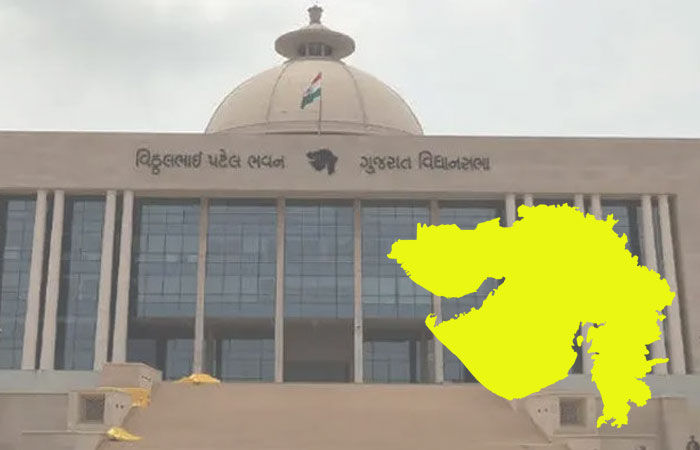Creation of Vav-Tharad: Gujarat's 34th Distric

On January 1, 2025, a significant administrative reform was announced by the Gujarat government, which approved the creation of a new district named Vav-Tharad. This new district will have its headquarters in Tharad town, a development designed to address the long-standing public demands for improved administrative efficiency and accessibility in the region. The decision was taken during a cabinet meeting chaired by Chief Minister Bhupendra Patel, reflecting the government's commitment to decentralizing governance and enhancing public service delivery. This move is expected to bring substantial changes to the region, directly impacting thousands of residents who have long sought better access to government services and infrastructure.
The formation of the Vav-Tharad district involves the bifurcation of the existing Banaskantha district, a large and diverse administrative unit in Gujarat. Banaskantha, known for its agricultural prominence and vast geographical area, has often posed logistical challenges for its residents. Before this reorganization, residents of several remote areas had to travel long distances to access administrative services located at the district headquarters in Palanpur. For many, this journey spanned up to 85 kilometers, creating significant hardships, especially for those needing frequent government interactions or emergency services. By creating Vav-Tharad as a new administrative entity, the government aims to reduce these challenges and bring governance closer to the people.
The new Vav-Tharad district will encompass eight talukas: Vav, Tharad, Bhabhar, Dhanera, Suigam, Lakhni, Deodar, and Kankrej. These talukas, characterized by their unique geographical and cultural attributes, will now function under the administrative umbrella of Vav-Tharad, fostering a more localized governance structure. Additionally, the district will include four municipalities: Tharad, Bhabhar, Dhanera, and Thara. Each municipality plays a vital role in the region’s socio-economic fabric, and their inclusion in the new district is expected to enhance local development and governance. The bifurcation leaves Banaskantha with six talukas and two municipalities, streamlining its administrative responsibilities and allowing a sharper focus on the remaining areas.
This administrative overhaul is not just a matter of redrawing boundaries; it carries significant implications for the approximately 600 villages that fall within the jurisdiction of the newly formed Vav-Tharad district. For the residents of these villages, the change is expected to bring tangible benefits in terms of time, resources, and accessibility. No longer will they need to endure arduous travel to Palanpur for basic administrative tasks or official approvals. Instead, with the district headquarters in Tharad town, essential services will be more accessible, saving time and effort for the local population. This proximity to governance is also expected to accelerate developmental initiatives, address local grievances more efficiently, and foster a stronger connection between the government and the people it serves.
The decision to create Vav-Tharad was not made in isolation but is part of a broader strategy to decentralize governance in Gujarat. Over the years, the state has witnessed rapid economic growth and urbanization, leading to increased demand for administrative efficiency. As regions grow in population and economic activity, the need for localized governance becomes more pronounced. The establishment of new districts like Vav-Tharad is a step in this direction, ensuring that administrative units remain responsive and capable of addressing the specific needs of their populations.
Beyond administrative convenience, the creation of Vav-Tharad is likely to have a ripple effect on the region's development. The presence of a district headquarters in Tharad town is expected to spur economic growth, attract investments, and improve infrastructure. Government offices, educational institutions, healthcare facilities, and other public amenities will likely see significant upgrades, benefiting not just Tharad but the entire district. The move also holds promise for better resource allocation, as smaller administrative units can focus on localized issues more effectively.
For Banaskantha district, the bifurcation represents a chance to recalibrate its priorities and focus on the remaining six talukas. The reduction in administrative burden could lead to more efficient governance, better resource distribution, and a renewed focus on areas that might have previously been overshadowed by the district's sheer size. This strategic division, therefore, benefits both the newly formed Vav-Tharad district and the residual Banaskantha district, creating a win-win situation for all stakeholders involved.
The process of creating a new district is not without challenges, however. It requires meticulous planning, resource allocation, and coordination among various government departments. Establishing the necessary infrastructure for the new district headquarters, including office spaces, staffing, and connectivity, will be a complex task. Moreover, ensuring a smooth transition for residents and businesses in the region is crucial to avoid disruptions in services. The government’s ability to address these challenges effectively will determine the success of this initiative and its impact on the region’s development.
The announcement of Vav-Tharad’s creation has been met with widespread approval from local communities and leaders. For many, this marks the culmination of years of advocacy for better governance and accessibility. The decision resonates with the aspirations of the region’s residents, who have long felt the need for a more responsive and localized administrative setup. As the new district begins to take shape, it is expected to usher in a new era of development and progress for the region.
In conclusion, the creation of the Vav-Tharad district on January 1, 2025, is a landmark decision by the Gujarat government aimed at improving administrative efficiency and accessibility in the region. With its headquarters in Tharad town, the new district will encompass eight talukas and four municipalities, significantly reducing travel distances and enhancing government service delivery for approximately 600 villages. This move reflects the government’s commitment to decentralizing governance and addressing the specific needs of its citizens. While challenges remain in implementing this reform, the potential benefits in terms of development, accessibility, and governance make it a promising step forward for the people of Vav-Tharad and Gujarat as a whole.
Posted By: Shraddha
.gif)
.gif)





%20(600%20%C3%97%20386px)%20(600%20%C3%97%20329px)%20(500%20%C3%97%20281px)%20(450%20%C3%97%20281px)%20(450%20%C3%97%20253px)%20(386%20%C3%97%20238px).jpeg)
%20(600%20%C3%97%20386px)%20(600%20%C3%97%20329px)%20(500%20%C3%97%20281px)%20(450%20%C3%97%20281px)%20(450%20%C3%97%20253px)%20(450%20%C3%97%20250px).jpeg)
.jpg)
.jpeg)